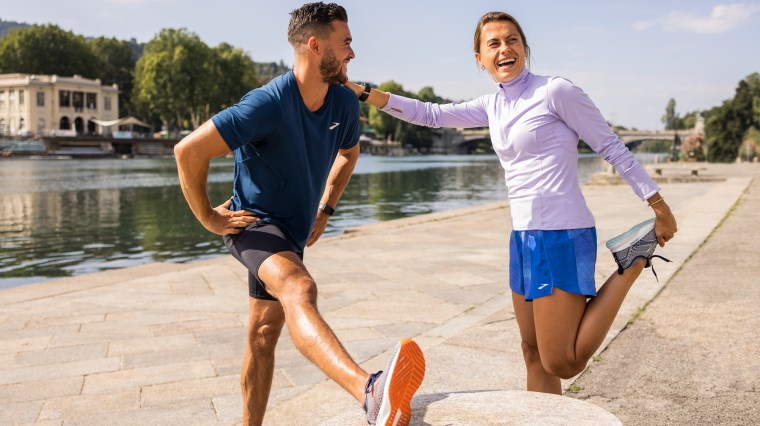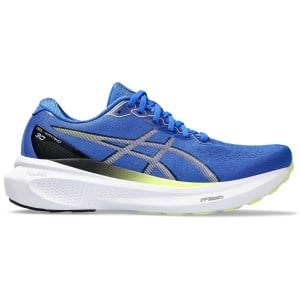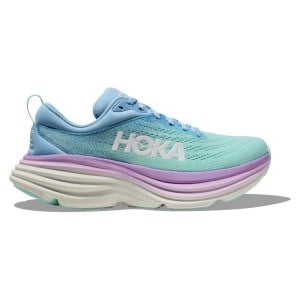Stop Lower Back Pain When Running: How To Improve Your Posture

In the exhilarating world of running, every kilometre tells a story. But for many, nestled between tales of personal bests and scenic routes is the narrative of lower back pain. It’s a challenge that’s as much about the body’s signals as it is about the mind’s perception.
As runners, we’re no strangers to discomfort, but understanding the relationships between our posture, gear and mindset can transform pain from an adversary to an ally. Check out this guide that helps unravel the complexities of back pain and offers actionable insights to keep you on track, pain-free.
Understanding lower back pain in runners
The connection between running and lower back pain
Running is a fantastic way to keep fit, but it’s not without its challenges. Because it’s a full-body exercise, one of its side effects could be pain, particularly in the lower back. The discs of your spine absorb shock as your body bounces with every stride, which is why pain can often be felt in that area.
Common causes of lower back pain in runners
- Muscular imbalances. It's not uncommon for runners to have certain muscles in the back, core, hips and legs that are weaker than others. When combined with poor posture or form, this can lead to significant discomfort in the lower back.
- Lack of core strength. Your core is the powerhouse of your body. If it's not strong enough, your pelvis might tilt out of its neutral position. This deviation can cause strain on the spine or hips, leading to that dreaded lower back pain.
- Overuse injuries. We've all been there – increasing our mileage too quickly, running on uneven terrain, or even wearing the wrong shoes. These can all lead to overuse injuries, which can manifest as pain in the lower back.
- Muscle strain: Sometimes, the pain is simply due to a muscle strain. It's usually short-lived and can be alleviated with some rest, ice, heat and gentle stretching.
The impact of lower back pain on a runner’s performance & attitude
There’s no denying it: lower back pain can be a real dampener on your running journey. Not only can it make running or even walking a challenge, but it can also affect your attitude towards the sport. The frustration of not being able to do what you love can lead to a negative mindset.
That’s why it’s crucial to address any signs of lower back pain when running by seeking the right treatment. This ensures you can continue to enjoy running and remain part of this vibrant community we all love.
The role of posture in running
How posture influences running mechanics
When we talk about running, posture isn’t just about standing tall; it’s about aligning your body for optimal movement and energy transfer.
Engaging your core muscles stabilises your spine and pelvis, leading to a more efficient running form. This alignment not only aids in efficient breathing, allowing for better lung expansion and improved endurance, but also ensures balance and stability, reducing the risk of falls and injuries.
Poor posture & its link to injuries
Bad posture can have real consequences. Slouching or hunching can misalign your spine, hips and knees, increasing joint stress. This misalignment combined with inefficient movement patterns, makes your body work harder, leading to fatigue and a heightened risk of injury or lower back pain when running.
The positive mindset: Its impact on posture
With a positive mindset, you’re more inclined to focus on your running form, even when the going gets tough. Also, keep in mind that increased confidence can naturally encourage you to stand tall.
Being open to feedback, whether from a seasoned coach or a fellow runner, can provide invaluable insights into improving your posture and form, ensuring you’re running at your best.
💡KEY TAKEAWAY: Bad posture can lead to lower back pain and a plethora of other issues. That’s why it’s important to keep an eye on it and check in with your body when running.
Gearing up to prevent lower back pain
The right shoes for a pain-free run
The foundation of a great run starts with the right pair of running shoes. It’s not just about style or brand; it’s about support, cushioning and alignment. Wearing the right women's running shoes or men's running shoes can significantly minimise lower back pain.
They ensure your feet are well-supported, which in turn aligns your ankles, knees, hips and spine. When these are in harmony, the risk of pain diminishes. Always opt for running shoes that cater to your foot type and running style.
Check out What Type Of Running Shoe Is Best For Me? or Sportitude's RunDNA shoe fitting service to find your ideal fit.
Clothing for proper posture
While running shoes are the foundation, the right clothing can also aid in maintaining proper posture. Opt for attire that’s both comfortable and supportive. Compression tights, for instance, can provide support for your muscles, promoting better posture.
Choose quality running shorts and running t-shirts from reputable brands to ensure they provide moisture management, unrestricted movement and minimise discomfort. If you're comfortable and free of distractions, it's easier to maintain proper running form.
Stretching: Your best defence against pain
Before you hit the road, trail or track, take a moment to stretch. Regular stretching not only improves flexibility but also prepares your body for the run ahead. Focus on stretches that target the back, hips and legs. This not only warms up the muscles but also ensures they’re limber, reducing the risk of strains and injuries. Remember, a well-stretched muscle is less likely to cause discomfort or pain.
💡KEY TAKEAWAY: Wearing appropriate footwear and running clothing can help you avoid aches and pains, so be sure to run with the right gear.
Practical tips to address back pain
Core strengthening for stability
Strengthening your core muscles can significantly enhance stability and reduce the risk of lower back pain. Simple exercises like planks, bridges and leg raises can be incorporated into your daily routine. Remember, a strong core means a stable spine, and that translates to a smoother, pain-free run.
Addressing pain mid-run
We’ve all been there. You’re in the middle of a fantastic run and suddenly, that familiar twinge hits your lower back. Instead of pushing through the pain, it’s essential to listen to your body.
- Slow down your pace and focus on maintaining an upright posture
- If needed, take a short walking break
- Stretching gently can also help alleviate the discomfort
Seeking professional help
While these tips can be beneficial, persistent lower back pain shouldn’t be ignored. If you’re consistently experiencing discomfort, it might be time to enlist the expertise of a physiotherapist or sports doctor. These professionals can provide tailored advice, exercises and treatments to address the root cause of your pain.
Remember, there’s no shame in seeking help; it’s all part of the journey to becoming the best runner you can be.
💡KEY TAKEAWAY: To avoid lower back pain, keep your core stable, but if pain does occur mid-run, listen to your body. Don’t be afraid to ask for help from the pros.
Perceiving pain in a healthy, new way
The power of positive reframing
Every runner, whether a novice or a seasoned athlete, encounters pain at some point. But how we perceive that pain can make a world of difference.
Instead of viewing pain as a setback, consider it a signal from your body, a form of communication. By reframing pain in a positive light, we can understand its root cause and address it more effectively. It’s not about ignoring the pain but about understanding and learning from it.
Medications: A tool, not a crutch
While medications can be beneficial in managing pain, it’s essential to strike a balance. Using them when necessary can provide relief, especially during intense training or after a challenging race.
However, overrelying on medications can mask underlying issues that need attention. Always consult with a healthcare professional and ensure you’re using them as part of a broader strategy to manage and understand your body’s signals.
The strength of community
Running isn’t just a solo endeavour. Joining a community of like-minded runners can be a game-changer when dealing with physical pain. Sharing experiences, tips and encouragement can make the journey less daunting. Whether it’s a local running club, parkrun or an online forum, being part of a community provides a support system that understands the unique challenges runners face.
💡KEY TAKEAWAY: Embracing a holistic approach to running means listening to your body’s signals, using tools wisely and leaning on others when the going gets tough.
Discover Sportitude, where every runner’s ambition meets expertise. Elevate your journey with our curated selection of gear and insights, tailored just for you.




